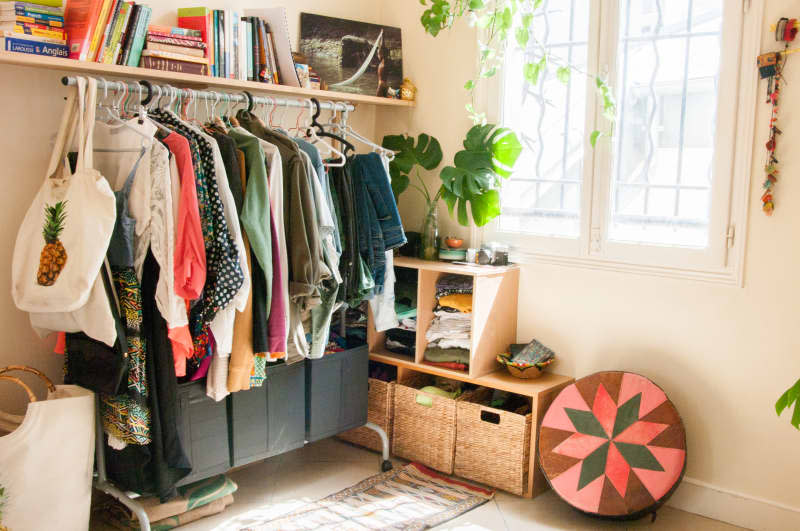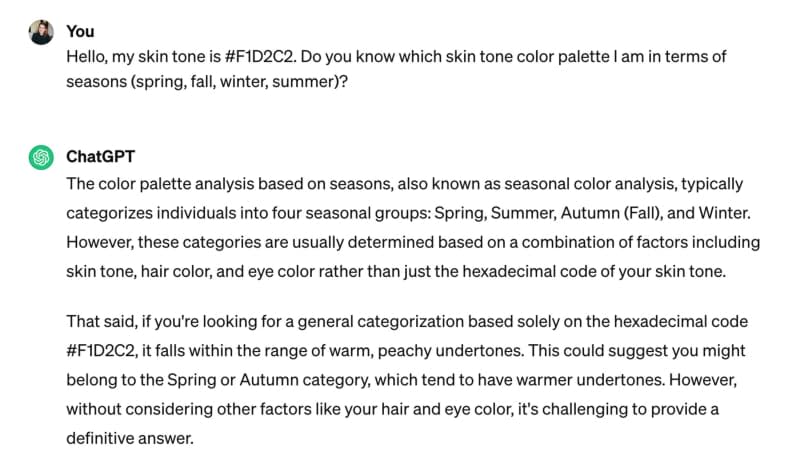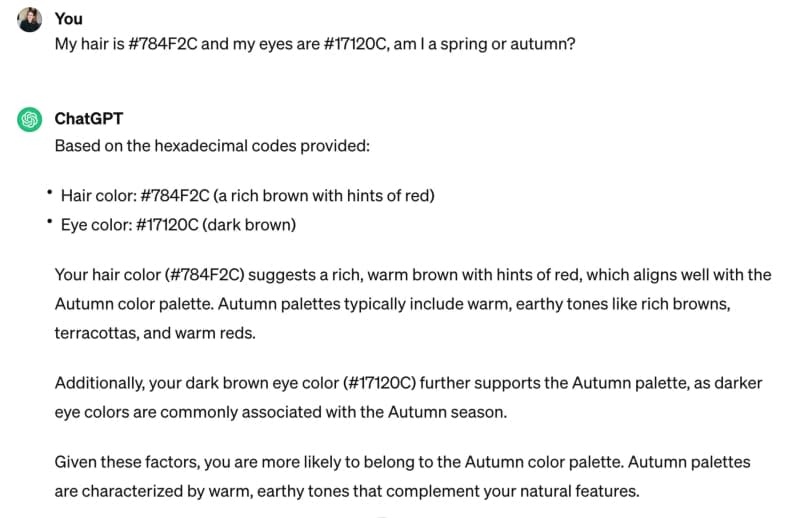I Tried This Hack to Find My “Color Season” for Free — The Results Surprised Me

A few years ago, I had my color analysis done and found out I am a Copper Spring (think: warm, glowy, and clear). Delighted by the royal blue, peachy pink, sunny yellow, amethyst purple, and tomato red in my palette, I’ve actually stuck to shopping according to my seasonal color analysis. It’s also helped me declutter my wardrobe.
Because color analysis has been trending on Instagram and TikTok lately, you may want to get yours done, but could be put off by the price tag — I was able to get mine done for free because I was trying it out for a story, but the service I used typically costs $170. And after looking at various color analysis providers online, I saw that consultations can generally range anywhere from $100 to $500. So when I saw a TikTok breaking down a ChatGPT hack to find out your colors for free, my interest was piqued.
What Exactly Is a Seasonal Color Analysis?
A seasonal color analysis is a holdover from the 1980s that has made a recent resurgence. The premise is that everyone’s skin, hair, and eyes align with a season: winter, spring, summer, or fall, and the analysis tells you which season’s colors you should dress in to look and feel your best. Some analyses even break it down one step further based on whether you look good in clear or muted colors — that’s where my Copper Spring comes into play. It’s a warmer, clearer take on spring colors.
Once you know your colors, you have a guide for how to shop for clothing, which colors look best, which to avoid, what color metal jewelry to wear, and which makeup shades to use. It’s supposed to make shopping easy, showing you exactly which colors make you pop versus the ones that will make you feel less than your best.
In the two years since I jumped on the seasonal color analysis bandwagon, dressing for your season has blown up. It’s all over Instagram and TikTok right now, so I knew it wouldn’t be long before AI would shake hands with color seasons.
How to Use ChatGPT to Find Your Color Season
This TikTok video explains how you can skip the pricey color consultation and instead use the color picker in Photoshop, Canva, or another design tool to find the exact hex code of your complexion, hair, and eyes. Just take a selfie in natural light, upload it, then use the color picker. Enter those hex codes with prompts into ChatGPT, then let the AI tell you what season you are. From there, you can get specific, asking which greens might look best on you or whether you should wear gold or silver jewelry.
My Experience with the ChatGPT Color Season Analysis Hack
I obviously had to try it — and I wanted to see if I would get the same results that I had back in 2022. I uploaded a selfie into Canva, then used the color picker to land on what I thought was an accurate representation of my colors. I asked ChatGPT based on my skin tone, which season I am.

Spring or autumn, it said. But it would need to know my hair and eyes for a better analysis.
I entered those two in and, according to ChatGPT, I’m an autumn.
I understand its confusion. Spring and autumn are closely related in terms of seasonal color analysis, but one quick look at the colors suggested by ChatGPT for an autumn, and I felt confident my spring analysis was, in fact, correct. Earth tones, rust, burnt orange, and terracotta topped the list, and while those colors are fine on me, they don’t pop the way a rich purple or a deep cobalt blue does. Knowing the difference between clear and muted colors is key here, and it seems to be a nuance ChatGPT hasn’t mastered.

Still, in the name of journalism, I kept going. Green is a color I struggle with. According to my Copper Spring color palette, I should look best in a grass green, lime, or even olive. But I’m never quite able to find just the right shade. I decided to pull ChatGPT into the mix.
It suggested forest green, olive green, moss green, and khaki green. Forest green? I’ll try that.
But things went off the rails when I asked about blues. I wear blue more than any other color, and I like to think I know the shades that work for me. Clear royal blue, vibrant cornflower, or a bright sapphire are all regulars in my rotation. But ChatGPT suggested teal, turquoise, navy, and slate blue. Teal and slate are awful on me — they’re too muted and wash me out. The others are fine, but not great.
Would I recommend you use AI to do a wallet-friendly color analysis? Not right now — unless you’re willing to put in more work to guide it or are just looking for some more information on what you already believe your color season to be. When I asked ChatGPT which colors I should wear if I’m a spring, for instance, it knocked that out of the park, feeding me all the colors I know look good on me — and even letting me dig even deeper on those colors.

